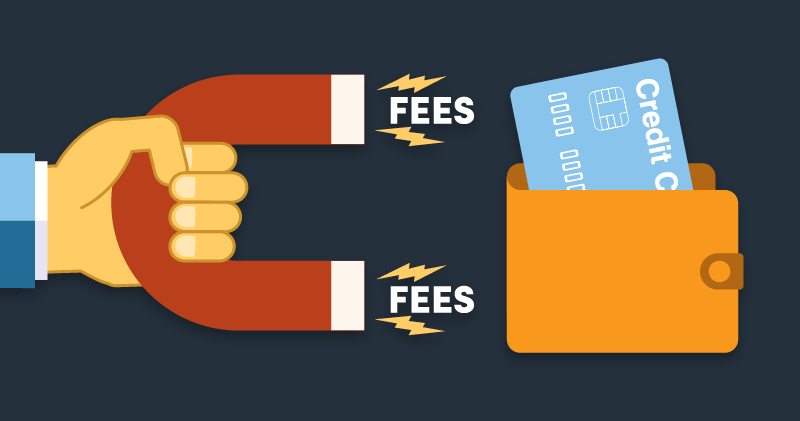Many people apply for, accept, and activate their credit card while never actually reviewing the terms and discovering the hidden costs in credit cards agreements.
Consumers should take the responsibility to be informed and to be aware of credit card hidden costs because the card company itself is not going to be anxious to wave the full cost of using credit cards in your face.
You are responsible for acquiring the information on your own and you need to take the time to read and understand the agreement to which you are becoming a party when you activate that card.
Determining the true costs of card use can be difficult, however, when advertisements are often misleading and emphasize only the good points of card use. An ad highlighting the hidden costs of credit cards wouldn’t result in many applications. There’s only one way to avoid being fooled – read the fine print for yourself.
Unfortunately, our society treats plastic credit cards as if they were simply another form of money. Many people no longer carry cash when they can so easily swipe their cards at the gas pump, in the grocery store, and just about any other place in the world. The ubiquitous nature of the credit card means it is taken for granted, regarded as simply another convenience that is what it purports to be on its face, an electronic way to carry out commerce in the 21st century.
The most important thing to remember is that the credit card companies are in the business to make money.
They aren’t going to do that if they simply provide a card to you, you use it to pay for things, and then pay off your bill each month. Interest rates and hidden fees are, in the eyes of the credit card company, simply profit potential – good for them but if un-monitored potentially disastrous for you.
Common Credit Card Fees to Be Aware of
There are a variety of ways that credit cards can mislead consumers starting with “teaser” rates, which are low interest rates advertised to snag new customers but that expire after a given amount of time.
Usually the good rates last a maximum 12 months if that long. After the introductory period is over the rate climbs and customers can easily accrue large amounts of interest before they even realize it.
Another hidden cost in credit cards involves changeable rates. These cards have no specific set rate and can vary up and down. Such cards should be monitored closely and high rates for no apparent reason should be questioned. With some companies, if you miss one payment or are a day late, your rates automatically go up.
Credit card companies routinely impose fees for late payments and for going over your credit limit even if only by a few cents. An increase in your credit limit might sound good but many credit card companies charge for that as well.
Certain transaction fees may apply for ATM cash withdrawals or for using checks from your credit card to pay bills. Some cards charge yearly fees and account maintenance fees as well. All of these add up quickly and should be factored in to the overall cost of using your card.
Read more: How Do Credit Cards Work [Now With Video]
Here are the main common credit card fees to be aware of:
- credit card annual fee – some credit cards are available for few hundred bucks a year or more. If you are not willing to pay for one (such as myself), look for credit cards that have ZERO annual fees. BEWARE: some companies will trick you into a free first year and then charge for the second one. Choose only FREE credit cards, so that you are safe.
- variable APR – APR is one of the main ways you will get deeper into debt since you will not only have to repay the money you used from your credit card, but also the interest. If you choose a o% APR credit card, make sure to pay your balance in full after the first year, otherwise you’ll get into a bigger trouble. Variable APR can work for people who always keep an eye on this metric. If not, just stay away.
- Late payment fees – usually about $40 bucks give or take. Always make at least the minimum payments, although it’s better to actually make efforts to pay your balance in full every month.
- International transaction fees – not all credit cards can be used for free abroad. Make sure your commissions stay at zero, otherwise resort to cash.
How to Avoid the Common Credit Card Fees
There are some things that you can do to steer clear of some of these hidden costs. First, make sure read the entire credit card agreement the company provides to you when you apply for or open an account.
Make sure that you make your payments on time and never go over your credit limit. If you can, it is also helpful to pay off your credit card balance every month.
Many people fall into the trap in college of having more than one credit card. Even high school students are bombarded with credit card applications and free offers to make accepting the cards all the more attractive.
Read more: How to Manage Multiple Credit Cards and Not Get Into Debt
Multiple cards mean multiple fees. If you have more than one credit card, decide which one you want to keep and pay off and close out the other cards. You’ll be far less susceptible to hidden costs with only one credit card and it is quite easy to choose a major card that will be accepted anywhere you routinely shop.
Always remember that it is the consumers’ responsibility to be informed about credit card terms of use. The credit card company will not be at fault if you dispute fees that you should have known about by virtue of having been provided with the printed materials.
In the logic of the company these credit card hidden costs aren’t hidden at all. You can take control of your credit future and save yourself many financial problems by taking a few minutes reading time and learning the hidden costs in credit cards before you sign on the dotted line.




